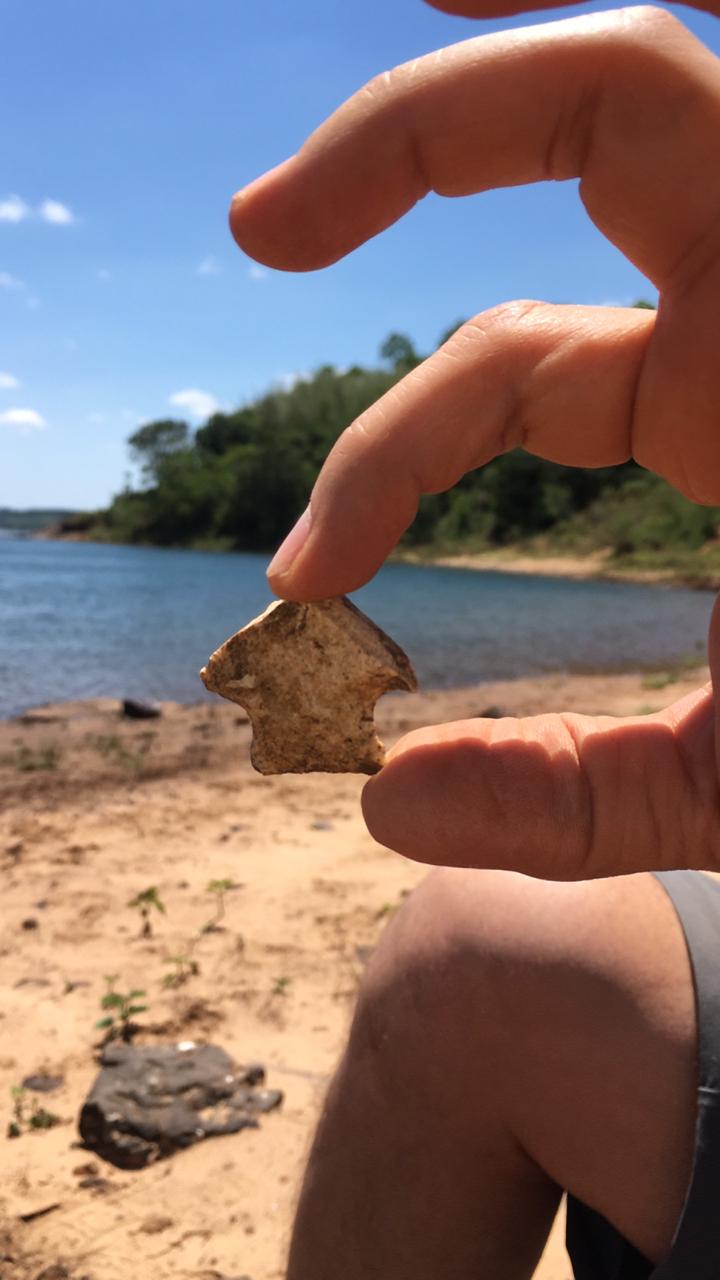In the first part of our Iguazu excavation blog we followed Archaeologist David Pau and a handful of intrepid members of the Awasi Iguazu team as they explored the tangled bamboo of the Atlantic Rainforest, searching for evidence of prehistoric settlements. They experienced challenging times, and moments of complete exhilaration, as they explored these seldom visited parts of Northern Argentina – let’s continue to follow them on their adventure.
“The next day we were in for an unforgettable adventure,” says Paula Bertotto, Operations Assistant Manager at Awasi Iguazu, who loves discovering new depths in the corner of the world where she grew up. “We travelled an hour further south, to the banks of the River Parana, a place where you can visit the house where Che Guevara lived in his early childhood at the beginning of the 20th century.”

A photograph of inside Che Guevara’s childhood home which is now a museum. Credit gobackpacking.com
Arriving from Buenos Aires, families like the Guevaras came to Northern Argentina to work in forestry or on mate plantations. “Like us, they used the majestic river to enter these lands,” says Paula “the roads by land were practically non-existent. They arrived in steam boats; we used modern kayaks.”
After paddling their kayaks for a couple of hours, David signalled to the group that they had reached their destination. Some local fishermen had told him that they used to find remnants of vessels on this riverbank. “We pulled up our kayaks” says Paula “and walked over the soft sand keeping our eyes open for pottery or stone tools. We were soon screaming with joy as we looked around us and saw carved tools and pieces of ceramics of many different types and colours.”

As well as working with Awasi, archaeologist David Pau works at the Museum of Prehistory of Eldorado in Misiones. In combination with his ongoing archeological work, he spends time with our guides, training them and imparting his substantial knowledge of the history of the region. He has also helped identify sites of particular interest to add to the large number of excursions available to guests, and regularly gives lectures and talks on the region.
A place of huge and unexpected archaeological value dating back 8,000 years
Despite his extensive experience, David’s jaw dropped when he came across the discoveries on this riverbank. “I collected stones with marks bearing secrets from days gone past and ran to show them to David,” recalls Paula. “Ever patient, he explained to me that this was not a complete tool in itself, but material used to manufacture other tools. It was a minefield of treasures.”
“As far back as 8,000 years ago, the first humans in the province carved stones and turned them into tools to butcher the animals they hunted or fished. We even found one with an opening to tie a stick to it and use to lower fruit from the trees.”

The most emotional moment of all…
“The most magical moment of all was when we saw Carolina come running towards us with a look of sheer joy across her face, holding out the most perfect arrowhead in her hands,” says Paula. “From this moment, we all wanted to find our own perfect arrowheads!”
Now it was time for luck to shine on Awasi Iguazu Resident Manager, Javier Lescano, who found a couple of arrowheads even older than the one Carolina had found. David estimated that these two dated back as far as 12,000 years ago because they were carved from a whitish stone, different to the typical basalt from the area, and therefore must have been sourced from elsewhere. It must have been a product of the nomadic traditions and culture of bartering that dates back thousands of years among the indigenous people.
David identified two main types from the day’s findings. Some smooth and older remnants, belonging to the 2,000 year old Kaingang people; and some thicker and more decorated, belonging to the Guarani, from about 1,500 years ago.
“David estimated that the place we were walking on had been inhabited by at least four different groups,” says Paula. “Thousands of years of history remained silent under our feet, which came to life through the archaeologist’s knowledge. How can we not feel tremendous gratitude for having these opportunities?”
Awasi Iguazu is a Relais & Chateaux property in Northern Argentina just 15 minutes from then famous Iguazu Falls. With a main lodge and 14 individual villas, the unique thing about Awasi (this is the same at Awasi Atacama and Awasi Patagonia in Chile) is that each room has a private guide and personal 4×4 vehicle. The Awasi Iguazu team is passionate about showing the best of the Iguazu Falls, and also uncovering lesser-known and unexpected places in the surrounding region, so that our guests leave with an experience they could never have imagined.

